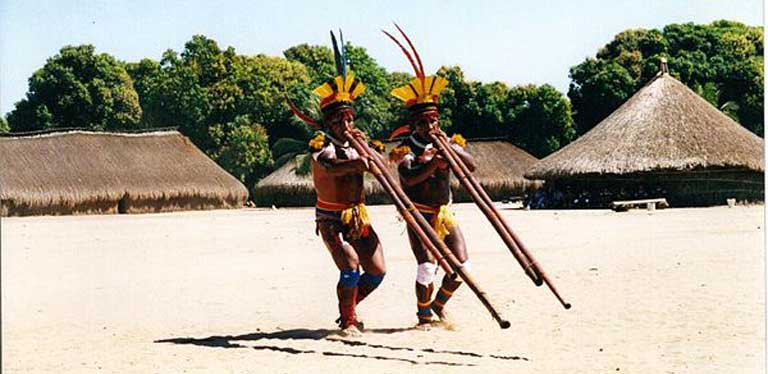
by DGR Colorado Plateau | Jan 2, 2016 | Colonialism & Conquest, Lobbying
By Sue Branford / Mongabay
Featured image courtesy of Wikipedia under the terms of the GNU Free Documentation License, Version 1.2
- Brazil’s Federal Public Ministry (MPF) has found the Brazilian federal government and the Norte Energia company guilty of ethnocide for the social and cultural destruction wrought on seven indigenous groups during the Belo Monte dam’s construction.
- The MPF is demanding the courts set up an external commission to prevent future harm, even as the Brazilian government is granted an operational licence for the dam, whose reservoirs are now filling.
- The MPF report states: “What is happening with the Belo Monte dam is a process of ethnic extermination by which the federal government is continuing with the colonial practice of integrating Indians into the hegemonic society.”
Brazil’s Public Federal Ministry (Ministério Público Federal, MPF), an independent state body, has started legal proceedings to have it recognised that the crime of “ethnocide” was committed on seven indigenous groups due to the severe detrimental impacts on their lives made by the building of the giant Belo Monte hydroelectric power station that will soon begin operating on the Xingu River in eastern Amazonia. The charges have been made against Brazil’s federal government and Norte Energia, the contractor that built the dam.
After carrying out a lengthy study that fills 50 books and includes contributions from a wide range of experts, the MPF has concluded that the “social organization, customs, languages and traditions” of the indigenous groups have been destroyed by the construction of the dam.
One of the actions undertaken by Norte Energia about which the MPF is most critical was a plan called “Plano Emergencial”. Under this plan the company set up a distribution center in Altamira, a town that has experienced explosive growth recently as a result of the dam’s construction. Goods and foodstuffs were available here each month for every indigenous village but the Indians had to travel to the town to pick them up. The money for the center came from a budget line for “ethno-development”, which was set up to help the villages become sustainable in food and to develop viable economic activities.
Indians, some of whom had never been to Altamira before, had to stop planting and fishing in order to travel to the town each month. The journey could take days and the whole procedure was very damaging to indigenous culture. The MPF says: “The villages became covered in garbage, with a proliferation of disease as a result, illnesses such as high blood pressure, obesity and diabetes became common because of the change in diet, child mortality surged, along with alcoholism, drug consumption and prostitution.”

The Belo Monte dam was completed at the cost of ethnocide to seven Amazon indigenous groups, according to the MPF. Photo by Pascalg622 licensed under under the terms of the GNU Free Documentation License, Version 1.2
At the same time Norte Energia began to build cheap houses in villages higher up the Xingu River, without taking into account indigenous culture. “Dozens of houses were built — wooden shacks with fiber cement roofs, like those in urban shanty-towns — with no consultation with Funai [the Indian Agency] or Ibama [the Environmental Agency]”. The building work itself was very harmful: unskilled workers without proper authorization entered the villages, disrupting village life and leaving construction waste behind; timber was illegally felled; a 17-year-old indigenous girl became pregnant from a construction worker.
Partially republished with permission of Mongabay. Read the full article, Brazil’s government charged with ethnocide in building of Amazon dam
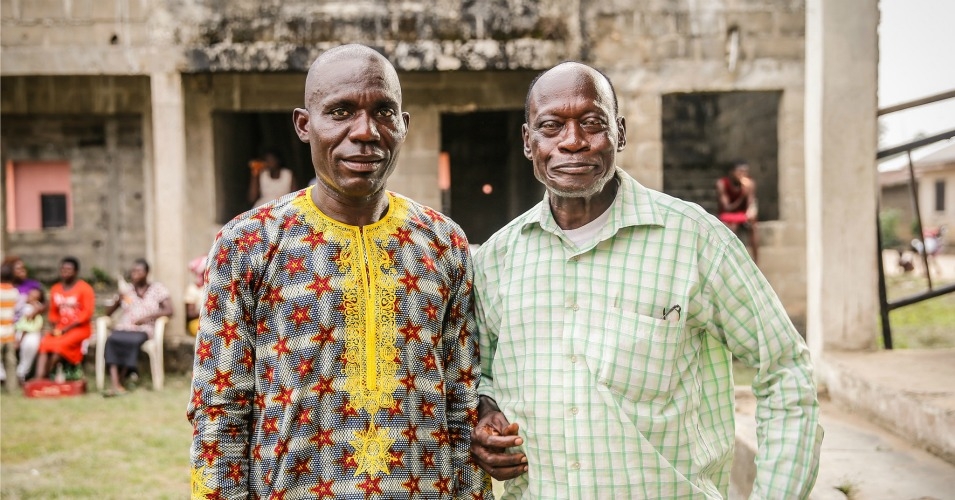
by DGR Colorado Plateau | Dec 26, 2015 | Lobbying, Toxification
Featured Image: Alali Efanga & Chief Fidelis Oguru from Oruma, two plaintiffs in the Dutch court case against Shell. (Photo: Milieudefensie/flickr)
In a potentially precedent-setting ruling, a Dutch court said Friday that Royal Dutch Shell may be held liable for oil spills at its subsidiary in Nigeria—a win for farmers and environmentalists attempting to hold the oil giant accountable for leaks, spills, and widespread pollution.
The ruling by the Court of Appeals in the Hague, which overturns a 2013 decision in favor of Shell, allows four Nigerian farmers to jointly sue the fossil fuels corporation in the Netherlands for causing extensive oil spills in Nigeria.
The scars of those disasters are still visible in the fields and fishing ponds of three Nigerian villages. In one village, drinking water has been rendered non-potable, while in another, an entire mangrove forest has been destroyed.
Alali Efanga, one of the Nigerian farmers who, along with Friends of the Earth Netherlands, brought the case against Shell, said the ruling “offers hope that Shell will finally begin to restore the soil around my village so that I will once again be able to take up farming and fishing on my own land.”
Beyond that, the court’s decision “is a landslide victory for environmentalists and these four brave Nigerian farmers who, for more than seven years, have had the courage to take on one of the most powerful companies in the world,” said Geert Ritsema, campaigner at Friends of the Earth Netherlands. “This ruling is a ray of hope for other victims of environmental degradation, human rights violations, and other misconduct by large corporations.”
Indeed, as Amnesty International researcher Mark Dummett said in advance of the ruling: “This case is especially important as it could pave the way for further cases from other communities devastated by Shell’s negligence.”
“There have been thousands of spills from Shell’s pipelines since the company started pumping oil in the Niger Delta in 1958,” Dummett said, “with devastating consequences for the people living there.”
Decrying the “incredible levels of pollution” caused by the activities of Shell and its subsidiaries, environmentalists Vandana Shiva and Nnimmo Bassey said at a media briefing in July that “weekends in Ogoniland are marked by carnivals of funerals of people in their 20s and 30s.”
Citing a 2011 United Nations Environmental Programme assessment, they noted that in over 40 locations tested in Ogoniland, the soil is polluted with hydrocarbons up to a depth of 5 meters and that all the water bodies in the region are polluted.
The UN report, they said, also found that in some places the water was polluted with benzene, a known carcinogen, at levels 900 above World Health Organization standards. “With life expectancy standing at about 41 years, the clean up of Ogoniland is projected to require a cumulative 30 years to clean both the land and water,” they said.
In another historic victory for the plaintiffs, the Hague court on Friday also ordered Shell to give the farmers and environmental activists supporting their case access to internal documents that the court said could shed more light on the case.
Channa Samkalden, counsel for the farmers and Friends of the Earth, said it was “the first time in legal history that access to internal company documents was obtained in court…This finally allows the case to be considered on its merits.”
The court will continue to hear the case in March 2016.
This work is licensed under a Creative Commons Attribution-Share Alike 3.0 License
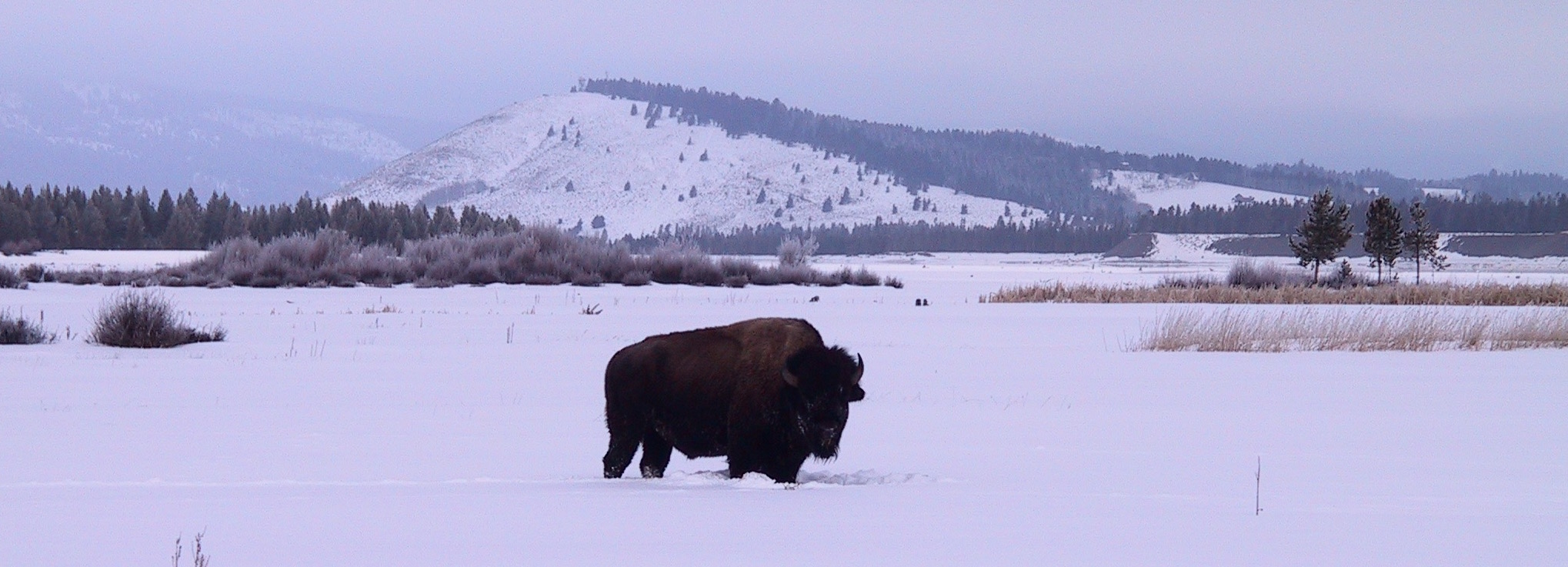
by DGR Colorado Plateau | Dec 24, 2015 | Listening to the Land, Lobbying
By Stephany Seay / Buffalo Field Campaign
Featured image: Hundreds of wild buffalo will no longer be harassed or otherwise harmed on the Horse Butte peninsula, seen in the distance here. Photo by Buffalo Field Campaign.
Yesterday, Montana Governor Steve Bullock issued his final decision on year-round habitat for wild bison in Montana, and Buffalo Field Campaign is very pleased to announce that after more than eighteen years of fighting for wild buffalo to freely roam Horse Butte, we have finally achieved this significant victory! As many of you know, Horse Butte is part of what we have been pressing for since the beginning of our campaign, and we are inclined to celebrate this achievement as the victory that it is; indeed, it may be the biggest victory we have had! It took nearly two decades of hard work in the field, in the courts, and in the policy arena to accomplish this, and it demonstrates how perseverance pays off, and how we must never give up.
This victory is a result of endless pressure, being endlessly applied by BFC, by you our dedicated supporters, by the incredible and active residents of Horse Butte, and by the buffalo themselves who consistently demonstrate resistance, persistence, and endurance. Another boon granted the buffalo is that bull bison — but only bulls — will be given year-round habitat in the Gardiner Basin. Please take a little time to celebrate this victory, as it has been hard-earned by each of you. Thank you to everyone who has been with us for the buffalo, making our work possible.
As we bask in this triumph, we cannot let down our guard. We must strengthen our resolve to continue fighting for wild buffalo and their right to roam the lands that are their birthright. We have many difficult battles yet to win. A closer look at Governor Bullock’s decision shows us that the buffalo are still in grave danger from livestock industry interests and the government agencies that serve them.
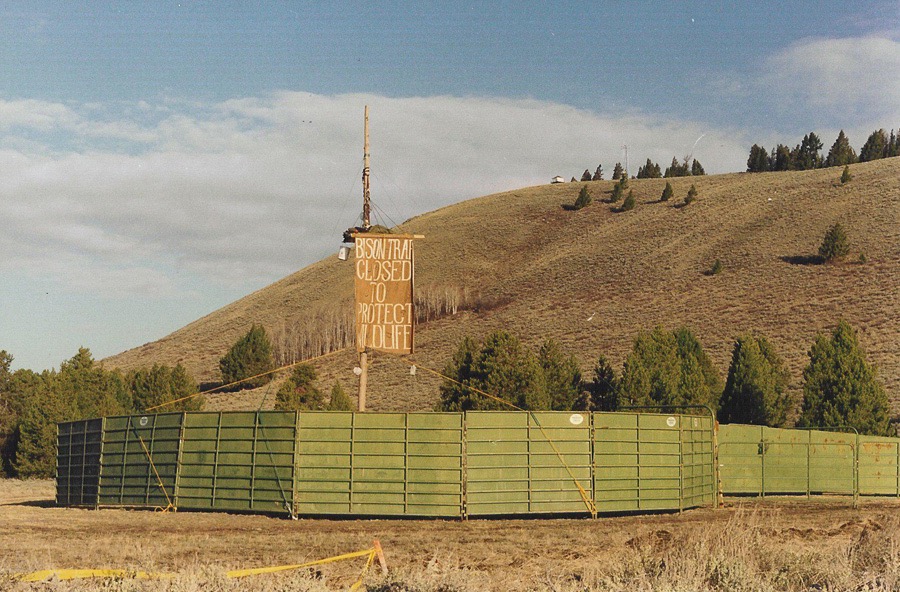
In 2004, the courageous and passionate Akiva Silver occupied the Horse Butte bison trap, saving many buffalo from being captured and shipped to slaughter. In 2008, the trap was again occupied by another brave individual, and the Montana Department of Livestock have not set it up since, nor will they ever again. Buffalo Field Campaign photo by Chris Rota.
Even the decision to grant buffalo year-round habitat on Horse Butte has its devilish details, mainly in the form of a population cap: during fall and winter approximately 450 buffalo will be allowed to live there; during the spring that number rises to 600, which is terrific timing since that’s when the large herds come to Horse Butte for calving season; but by July the government will allow only 250 buffalo to remain. From reviewing the Governor’s decision, it appears that, should there be more than 250 buffalo on Horse Butte by summer, hazing would not begin until then, which is about six weeks later than hazing has been taking place in recent years. While our ultimate goal is to put an end to all hazing, this means that wild buffalo will finally have the opportunity to make their own choices about when or whether to migrate into Yellowstone for the summer months. It will be an awesome gift to learn what they will do directly from the buffalo.
The deeper you look into the Governor’s decision, the more questions it raises. Hazing, hunting, and capture-for-slaughter remain tools that the livestock-backed government agencies will employ, with goals of keeping this highly vulnerable — and indeed, endangered — population at artifically low numbers. Additionally, wild buffalo will not be granted any “tolerance” along the south side of the Madison River, which is favored habitat, mostly public lands, that the matriarch-led family groups very much enjoy and require during the months surrounding calving season. Also, in the Gardiner Basin, matriarch-led family groups will not have full access like their adult male counterparts, but will be given tolerance only during “hunting” season, and will be hazed into Yellowstone by mid-spring.
Again, we have a long way to go for the buffalo. We need you to join with us in strengthening your resolve and renewing your commitment to do whatever it takes to defend our beloved wild buffalo until they roam free all across the lands that have been their home since buffalo time began.
Support Buffalo Field Campaign here.
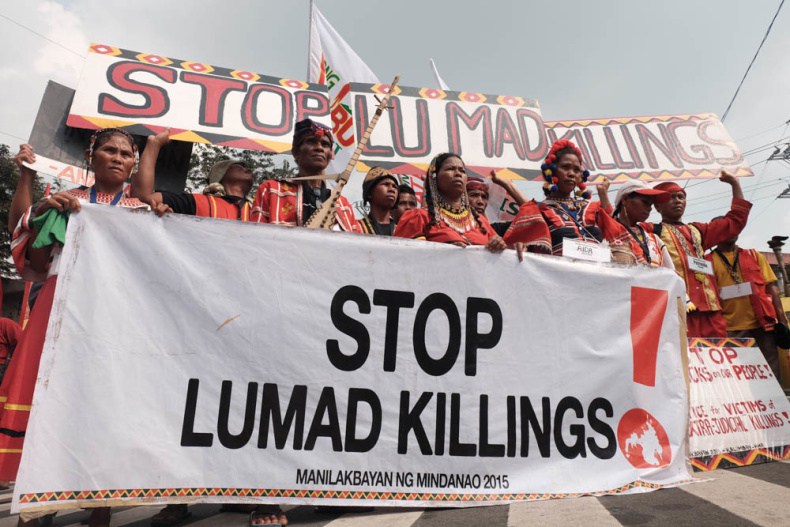
by DGR Colorado Plateau | Dec 21, 2015 | Colonialism & Conquest, Mining & Drilling, Protests & Symbolic Acts
By Hannibal Rhoades / Intercontinental Cry
Last week, a 3,000 person-strong people’s caravan, or Lakbayan, formed on the island of Mindanao to protest the criminalization and murder of Indigenous Peoples and environmental defenders in the Philippines.
Uniting Indigenous Peoples, peasants, workers, faith groups, teachers and youth, the caravan marched for three days and over a hundred kilometers from Davao del Sur to Koronadal City under the banner ‘Resist imperialist plunder! Stop Lumad killings!’
Though the numbers reported vary, the organizers of the caravan say 144 indigenous people, environmental defenders and human rights activists have been the victims of extrajudicial killings during the reign of incumbent President Benigno Aquino.
In a statement released before the Lakbayan, the groups connected these killings and rights abuses to the increasing presence of the extractive industries in Mindanao and the Philippines.
“These human rights abuses glaringly persist in the ancestral domains where the big and foreign mining companies and agri-plantations operate,” they said.
These killings form part of a wider pattern. According to research by UK-based think tank Global Witness, two environmental defenders are killed every week as they work to protect their lands from being appropriated and exploited by mining companies and other industrial interests.
In recent years, the Philippines has become a hot spot for these killings. But, as is the case around the world, very few of those responsible for the murders of environmental defenders ever see a court of law. Around the world between 2002-2013, perpetrators of such killings were brought to justice in less than one percent of cases.
STOP LUMAD KILLINGS
On Sept. 1, 2015 educator Emerito Samarca and two Lumad leaders, Dionel Campos and Aurelio Sinzo, who opposed large scale mining, were brutally murdered in Lianga, Mindanao. According to local reports, the men were killed in the heart of the community by members of the Maghat/Bagani paramilitary group, attached to the 36th Infantry Battalion of the Philippine Army.
Speaking at COP21 in Paris, Clemente Bautista, National Coordinator for Kalikasan PNE, described how the Armed Forces of the Philippines and affiliated paramilitaries are implicated in the terrorization of Indigenous and peasant peoples.
“The government is using militarization to protect corporate mining in the Philippines. They use the state military forces including paramilitaries to secure mining projects, quell the people’s resistance, and sow fear among the people, particularly those in mining-affected communities. Mining corporations, military and paramilitary groups employ violence such as harassment, illegal arrest and assassination, targeting anti-mining leaders,” he said.
The killings of Samarca, Campos and Sinzo are the latest in a spate of murders that has seen 56 Lumad leaders assassinated for protecting their lands and communities.
The “Lianga Massacre,” as it has become known, sparked international outrage and a day of solidarity and action that called on the Philippine Government to Stop Lumad killings. But the more diffuse consequences of the terror these kinds of killings are designed to produce have been underreported outside of the Philippines.
The relentless persecution of the Lumad People is creating a climate of terror in Mindanao that is profoundly impacting the freedom of the Lumads to live their lives freely.
In their statement before the three-day Lakbayan, organizing group Soscskargends Agenda revealed how the rising tide of violence in Mindanao has contributed to the internal displacement of up to 40,000 Lumads. The Lianga Massacre alone forced over 3,000 local Lumads to flee their isolated villages in Surigao del Sur to nearby towns, fearing for their lives.
The constant threat of violence in Mindanao and the panic migrations that result are having a particularly negative impact on Indigenous children. According to Soscskargends Agenda, at present 9 out of 10 Lumad children have no access to formal education and 87 Lumad schools are suffering from “various forms of military violence”.
“The 36th IB Philippine Army-Magahat/Bagani rampage at the ALCADEV School shows that the Aquino government has dropped all pretenses of adhering to the United Nations Convention on the Rights of the Child and other international human rights instruments,” say the International Coalition for Human Rights in the Philippines.
The Lakbayan gave the groups involved an opportunity to elevate these underrepresented issues and create a platform for several urgent demands.
The groups are calling upon the Philippine government, first and foremost, to stop the killing of Lumad people, protect indigenous and peasant schools in Mindanao, and pull the plug on the large scale multinational mining projects that they say are helping fuel poverty and violence in the Philippines.
THE RESOURCE CURSE
Mindanao has become known as the “mining capital” of the Philippines. The island is peppered with 500,000 hectares of mining concessions, an area almost eight times larger than Metro Manila, the National Capital Region of the Philippines. These concessions have overwhelmingly been granted to multinational corporations, many of which are registered in Global North nations such as Canada.
Other islands in the Philippines, estimated to be the sixth richest nation in the world in terms of mineral and metals, have experienced a similar expansion of large scale mining since the Philippine Mining Act of 1995 (Republic Act 7942). The Act liberalized the country’s mining sector, promising economic growth and development through the exploitation of the country’s natural resources with the help of multinational corporations.
However, many Filipino civil society and indigenous groups argue that the liberalization of the mining sector has led to rising poverty, not prosperity, for Filipinos.
In a recent report,* Philippine people’s network Kalikasan PNE write that, based on data from the Philippine Bureau of Internal Revenue, between 1997 to 2013 less than 10% of mining revenues generated in the Philippines stayed in the country’s economy. According to their research, mining contributes only 0.7 percent to Philippine GDP and provides just 0.7% of employment.
The significance of these figures is emphasized when the costs mining corporations inflict on ecosystems and local communities are considered. The presence of multinational mining corporations in the Philippines has unleashed a tidal wave of environmental destruction on local indigenous and rural communities, costing thousands of livelihoods, devastating ecosystems and sustainable local economies.
The Marcopper disaster at a mine the owned by Canadian multinational Placer Dome on the island of Marinduque provides a good example.
On March 24, 1996 a sealed mine tunnel connected to a pit containing 23 million metric tons of mine waste fractured, leaking between 2-3 million tons of the waste into the Boac River. Residents of twenty local villages were forced to leave their homes, some of which were totally inundated by the flash flood of mine waste.
Agricultural fields were also flooded and the rapid destruction of all aquatic life in the Boac, a key source of livelihoods for local fishing communities, led the Philippine government to declare the river dead. Local peoples had already suffered decades of chronic environmental pollution, loss of livelihoods and ill health as the result of mining.
Dozens of other mining disasters have occurred in the period since the Mining Act of 1995 was passed. “Simply put,” write the authors of Kalikasan’s report, “we have experienced two decades of mining plunder.”
RESISTANCE AND MILITARIZATION
The two decades since Mining Act of 1995 was signed into existence have also been characterized by escalating resistance efforts from Indigenous Peoples, peasants and their supporters at the local, national and international levels.
Indigenous Peoples in particular have taken a stand to defend their territories, even taking up arms to protect their lands. In some cases this sustained resistance has been successful in preventing mining projects going ahead.
In June 2015, the Indigenous B’laan people and Philippine environmental groups celebrated mining giant Glencore Xstrata’s decision to pull out of the highly contested Tampakan copper-gold mining project. The company had been attempting to get mining under way since taking ownership of the project in 2001, but met powerful resistance from the B’laan.
The Philippine government’s response to such strong, sustained and well organized resistance has been to increasingly militarize areas where multinationals are operating, as seen in the case of Samarca, Campos and Sinzo.
The organizers of the recent Lakbayan say the current Aquino government’s “vicious internal security doctrine,” Oplan Bayanihan, is being used as a cover to to attack the schools, communities and leaders of those who actively resist mining.
The stated aim of Oplan Bayanihan, a government counter insurgency program, is to squash the New People’s Army (NPA), a communist guerrilla group that has been warring with the Philippine government for over two decades. However, the powers contained in the plan are also used to criminalize anti-mining activists who threaten the interests of multinationals in regions like Mindanao.
These activists are frequently accused, by the government, military and paramilitaries, of being connected with the NPA. Branded as anti-government rebels their intimidation, incarceration and/or murder is effectively excused.
But even this systematic state repression is not stopping people standing up for their rights, says Bautista.
“We say more oppression breeds stronger resistance. Surely the government and corporations will continue to trample the rights of the indigenous people and other sectors. This will make Indigenous Peoples and ordinary people more united and their collective struggle stronger.”
Holding cultural events, forums and symbolic actions along the way, the recent Lakbayan paid testimony to this theory, as people voted with their feet and raised their voices for justice.
*The report,
Kalibutan: Stories and lessons from the Filipino people’s struggle for the environment, is not yet available online. Visit
Kalikasan PNE’s website to make inquiries and find out more.







